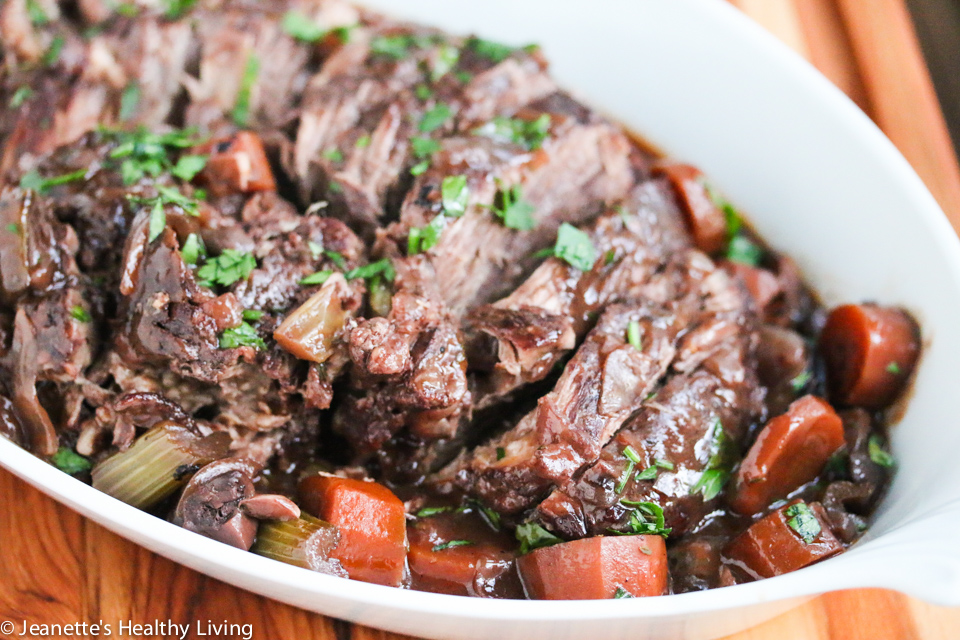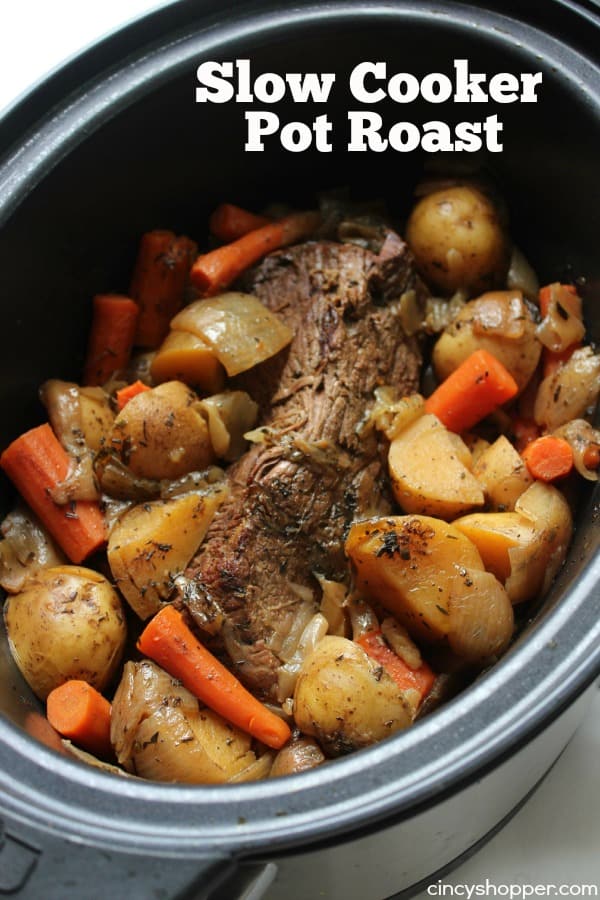Pot Roast In Slow Cooker
- I made up The Perfect Crock Pot Roast in good ol' Sir Hamilton (my Hamilton Beach Programmable Insulated Slow Cooker). Your favorite 5-6 quart slow cooker will work.
- Get a head start on dinner with this fresh take on a slow-simmered, all-in-one meal that makes clean-up a breeze.

Perfect Pot Roast The Pioneer Woman. Note: Today, since I’m making pot roast on my Food Network show, I’m bringing this, one of my very early cooking posts on The Pioneer Woman Cooks, up to the front. Pot roast is one of my absolute favorite meals, and once you figure out the secret to making a good roast, there’s no going back! Original post: January 2. I want you to embrace the pot roast, my friends! I had to kiss a lot of frogs before I found my prince, Marlboro Man.
In the mood for a classic comfort food? Look no further than these recipes for slow cooker pot roast, including beef pot roast, Italian pot roast, Mexican pot roast.
And I had to make a lot of really bad pot roasts to finally figure the whole dadgum thing out…and figure it out I did, thank the Lord above. And the verdict? Pot roast, when made according to a few fundamental rules, can be a totally delicious addition to your repertoire. There are lots of different, equally delicious ways to make pot roast. Burger King Smoothies. Today’s version is the first of many I’ll be profiling here.
The meat you use is important. My favorite roast is the chuck roast; it has wonderful marbling throughout the meat, and when given an ample amount of time to cook, chuck roast winds up being tender and melt- in- your- mouth delicious. To understand the importance of adequate cooking time, you must understand that these tougher pieces of meat have lots of tough connective tissue that will only soften when cooked at a lower temperature for a long period of time. You can’t rush a pot roast; you’ll be disappointed with the result if you try. But if you reach deep down into your soul and find your patience—at least, the patience that was given to you by your Maker to relate to beef- related circumstances in your life—you won’t be disappointed. Let’s just jump right in and embrace the pot roast together, okay?
The Cast of Characters: Chuck Roast, onions, carrots, salt, pepper, beef stock, fresh thyme, fresh rosemary (if you have it; if not, dried is fine). Optional ingredients: red wine, garlic, button mushrooms.
Behold the chuck roast, my friends. See what I mean about the beautiful striations of fat throughout the meat? Mmmmm…it’s a really good thing. Just remember: Marbling equals tenderness AND flavor. I love to use the word “striation” at least once a week. It throws people off and makes them wonder why they don’t know what that word means, and it makes me feel smart.
Even though I really don’t know what it means either. Okay, first: grab your olive oil. It really doesn’t have to be extra virgin, and if you’re feeling particularly naughty, you can add a couple of pats of butter. But my bottom feels big right now, so I’m giving up butter for thirteen hours. I’m sure it will help. First, heat a large pot/dutch oven over medium high heat. Then add 2 to 3 tablespoons olive oil.
Or combo of butter and oil, unless your bottom feels big, then abstain for thirteen hours like me.)Now generously salt your chuck roast. Mine was 2. 5 pounds, which is a bit small for me. I like to use kosher salt because it’s flat and flaky and adheres to the meat better than regular salt. But plain salt is fine, too.
But whatever salt you use, don’t hold back—salt away, baby. Now add a bunch of black pepper. I finally bought myself a new peppermill after my boys commandeered and destroyed my wooden one.
And I think it’s made of titanium or something, which means it’s punk proof. Unless they find Marlboro Man’s blow torch, which is always a possibility. In any event, pepper the meat generously. You’re seasoning a lot of meat here. Now take a couple of onions…And cut them in half from root to tip.
Then cut off the tops, cut off the bottoms, and peel off the outer layer. If you’re an onion addict/freak, feel free to use more. When the oil in the pot is very hot but not quite smoking (and heck, if it smokes, it’s no big deal)…Add in the onions. And brown them on one side, about a minute.
The oil should really sizzle, like Marlboro Man.)Now flip ’em over and do the same to the other side…Then remove the onions to a plate. Now thoroughly wash (but do not peel) 6 to 8 carrots, then cut them roughly into 2- inch slices. I like not peeling them because it maintains a rustic quality, and I’m, like, soooo rustic.
As you well know. Throw them into the same (very hot) pan and toss them around until slightly brown, about a minute or so.
Remember, the point here is to get a nice color started on the outside of the vegetables—not to cook them. Now remove the carrots to a plate, and get the pot really hot again.
If necessary, add in another tablespoon of oil. See all that nice brown stuff? That stuff is good. That stuff is real, real, good. We’re going to put the meat right on top of that stuff. Make sure it’s adequately seasoned, then set it into the hot pan and sear it on one side, about a minute. When that side is nice and brown (the browner the better), flip it over to the other side.
I like to even hold it up and sear the sides, too. When you’ve browned it all over the place, remove to roast to a plate. Oh, and see that brown stuff in the pan? That’s good. That’s real, real good. Now, with the burner on high, we’re going to deglaze the pan. In layman’s terms, we’re going to incorporate the use of a liquid to precipitously loosen the diminutive bits of culinary goodness from the bottom of the alloy pan. In real people’s terms, we’re gonna scrape the heck out of the pan and git all that gooooood stuuuuuuff off the bottom.
Amen. Usually, I like to start with a splash of red wine, then fill in with beef broth. But if you’re averse to wine, OR if you live in a state, ahem, that prohibits liquor stores from being open for business on Sundays, ahem, cough cough, and you don’t have any red wine in the house, cough cough…you can just use beef broth like I did here and it’ll taste just fine. Delicious, even! After you add about 1 cup or so of liquid, stop and use your whisk to stir and scrape the bottom of the pan. Now add the browned meat to the pan and add in enough liquid to cover the meat halfway. I’d say 2 to 3 cups of liquid is fine. Now add the onions back in…And do the same with the carrots.
Hey! It’s starting to look like pot roast, isn’t it? What a coincidence! Here, I’m splashing a little more broth into the pan because I’m a middle child and I think everything needs a little tweaking, even if it doesn’t.
Now I don’t mean to be a traitor or anything, but I have really found through the years that fresh herbs—specifically, rosemary and thyme—can transform a regular roast into something extraordinary. This is a spring of rosemary, and I like to add about 3 or 4 sprigs. Just leave it all intact and throw it in. And rosemary is a very easy plant to grow in a container. Try it! It’s such an aromatic, versatile little herb.)But if you only have dried rosemary in your spice cabinet, who cares? Use it! Oh. And when you do add in the fresh sprigs, be sure to submerge them in the liquid so they’ll really be able to work their magic.
This is a sprig of fresh thyme, which I love and adore. Soon I’ll be posting a recipe for my fresh thyme bread, which rocks my existence, but for now just throw some into the roast. I use about 3 sprigs. Mmmmm. Now we’re talkin’. Time to put it in the oven. Put the lid on, then roast in a 2. For a 4 to 5 pound roast, plan on 4 hours.
And don’t peek and fiddle and frig with it, either. Just find a hobby that will occupy your thoughts and actions for the time it takes for your roast to cook. Needlepointing, scrapbooking, birdwatching, and spelunking are just a few of the many options available. And here’s what it will look like.
Now remove the meat to a cutting board and test it with a fork. See how easily it splits apart?
You can literally see the melted connective tissue between the meat. When it easily “falls apart,” it’s definitely ready. To serve, you can either slice it with a knife…Or you can just shred all the meat with two forks. It’s matter of preference. If you cooked the roast correctly, it won’t matter much how you slice it—the meat will all fall apart anyway. Now’s a good time to have my mashed potatoes handy.
Which reminds me, I never addressed The Potato Issue at the beginning of this post.
